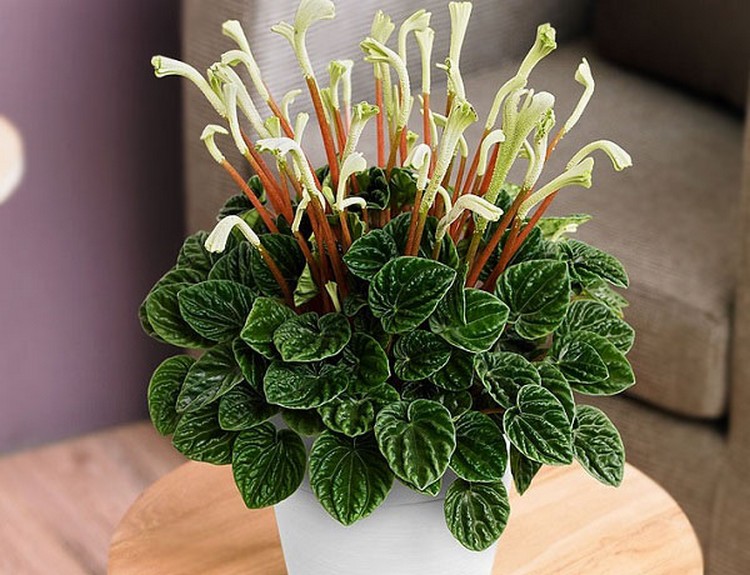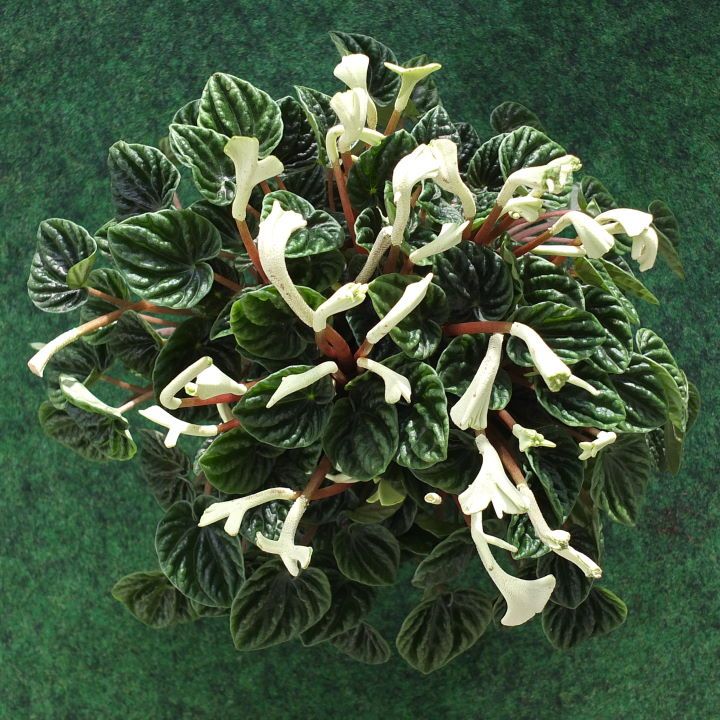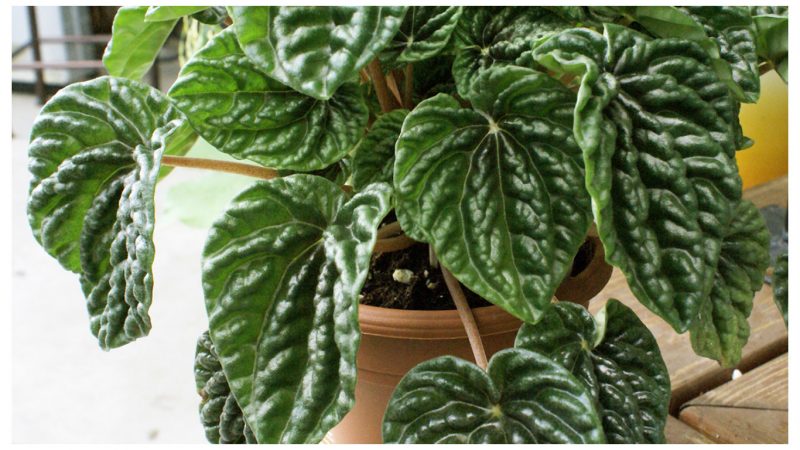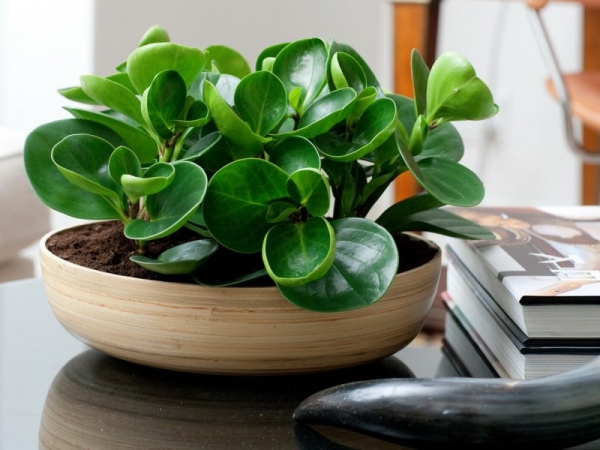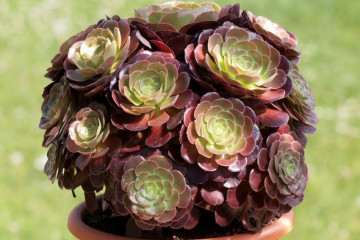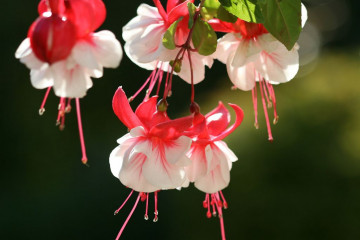Peperomia Lilian Caperata - home care
Content:
Peperomia is a herbaceous evergreen plant about 30 cm high. The emerald green leaves resemble a heart in shape. It lives in countries such as India, South America and Africa. Peperomia has many different types. Almost all species are perennial. Peperomia Lillian can serve as a decoration on balconies, complement the interior of apartments or offices.
Description of the variety
Peperomia Lillian Caperetta is known as an ornamental plant, has delicate and beautiful inflorescences. The buds grow on pinkish fleshy peduncles. The flowers are like lilies; after flowering, dry berries remain at the tips.
Peperomia Caperata belongs to the Pepper family. Peperomia Caperata (or Peperomia wrinkled) acquired this name because of the wrinkled appearance of the leaf. The Peperomia Lillian variety was created by nature itself, without artificial interventions. It is very compact and gives comfort both in office buildings and at home.
Useful properties of the plant
Peperomia is often used as a remedy for colds. A flower can serve as an energetic, i.e. he is able to saturate with positive emotions. In office spaces, plants are planted to maintain a warmer and more friendly atmosphere.
Amazing properties
Peperomia Lillian has many amazing properties. Scientists have proven that the plant has a good effect on the digestive system and energy in the house. The flower is able to secrete phytoncides, which get rid of bad microorganisms, which helps to cope with various colds and establish a microclimate in the apartment.
Peperomia Lillian practically does not cause allergies, so many mothers buy a flower for the nursery.
Features of Lillian's peperomia care at home
- All types of peperomia do not like low temperatures; in winter, it is better to keep them at 20-22 degrees. Grow quickly in well-lit areas.
- Water the plants sparingly. The soil should not always be wet.
- They like medium humidity.
- You can reproduce in different ways.
- It is better to transplant the plants at a young age, then once every few years.
Caring for a plant at home is not very difficult. Plants that have dark green leaves can be located on northern windows, variegated ones will like bright lighting. However, it is better to remove it from the bright summer sun so as not to burn the leaves. If there is not enough light, the leaves will grow small and pale.
Peperomia is very fond of the warm atmosphere, but has a negative attitude towards drafts. If the plant is located on a balcony or with an open window, it will grow slowly and sluggishly. In spring, the ideal temperature for a plant is 20-22 degrees, in winter - at least 16, if the temperature is below normal, then the leaves will dry out and fall off.
The flower loves warm humid air, but even dry air in the house is quite suitable for him to grow.Species with delicate and thin leaves are more picky about humid and warm air, while species with thick and sturdy leaves can easily tolerate dry air.
Overdrying the plant is not so scary, because many people store moisture in their fleshy leaves, but excessive moisture can lead to rotting of the roots.
Peperomia does not need any special complex care at home, so it can grow remarkably well in dry climates. But in order for it to be bushy, lush, you need to spray it with water.
Watering peperomia is necessary with settled water and warmer than the temperature in the room. Watering should be done more often in summer than in winter.
Peperomia is not a fan of strong and frequent watering.
- Only in hot weather may the plant need more water than under normal conditions.
- Excessive watering should not be allowed, so as not to lead to the death of the roots.
- Due to excessive watering, the leaves of the plant can wither and fall off.
- It is necessary to start saving the plant at the first signs of the disease, without watering it for a week until the substrate is completely dry.
Transfer
Young plants of peperomia Lillian are transplanted once a year, and older plants are transplanted once every few years. When replanting, the new pot should be larger in width, length and height. The plant needs to be fed with a variety of fertilizers.
Reproduction methods
Peperomia Lillian can be propagated in three ways:
- Propagation by cuttings
The top of the plant, which has from one to three leaves, must be transplanted into the ground, after moistening it. Place the seedlings in a warm room for quick germination. It takes about 30 days for the root system to develop. Further, if there were several seedlings, then it is necessary to transplant each of them into a separate pot.
- Reproduction from a leaf
Good leaves that do not have any damage for rooting should be placed in the ground in order to be covered with a small bag to create a greenhouse effect. With this method, propagation of the root system develops faster than with propagation by cuttings. After a couple of weeks, you can see the first roots, and by the end of the month, the root system is completely rooted.
- Seeds
Seeds need to be easily spread over the pot in loose soil. Close the pot with a bag to create a greenhouse effect. During this period, the room temperature must be maintained at 24 degrees Celsius. Also stick to high humidity. After the roots have matured in the plants, they should be transplanted into separate pots.
Pruning rules
It is necessary to resort to pruning so that the plant takes on a beautiful and unique look. Trimming must be done step by step. First, the plant must be examined and dry leaves and branches cut off, care facilitates further growth. Some growers cut flowers in order to preserve the flower's vigor. Plants that are more than three years old can hardly tolerate pruning, so it is better to form a bushy and beautiful crown from a young plant age.
Pest control
Peperomia Lillian is resistant to any disease. The main problems appear due to improper care of the plant. Weak leaves and shoots are very susceptible to damage by insects, which can cause great harm to the health of the plant. If symptoms appear, then it is better to drip the flower with a special solution.
After the measures taken, the flower will delight you with even more magnificent forms and beautiful inflorescences.
Top dressing
It should be fed mainly in spring and summer, using for this the usual fertilizer for deciduous houseplants.
What improper care can lead to
The plant begins to die when not properly cared for.In this case, it can be affected by diseases of a different nature and pests. The presence of the disease can be seen by the appearance of the inflorescence itself. If the leaves began to wither often, then it does not have enough moisture. The reason for this may be the low temperature in the room itself. If dark spots appear on the leaves, then it is better to move it away from drafts. If the leaves begin to turn yellow, then you need to remove it from direct sunlight, otherwise the leaves may even get burns.
Peperomia Lillian does not need special care to keep him at home. The flower itself is small in size, therefore very compact, the plant has unique properties that can destroy bacteria, and is also a positive energetic for home and peaceful coziness both at home and in the office.
